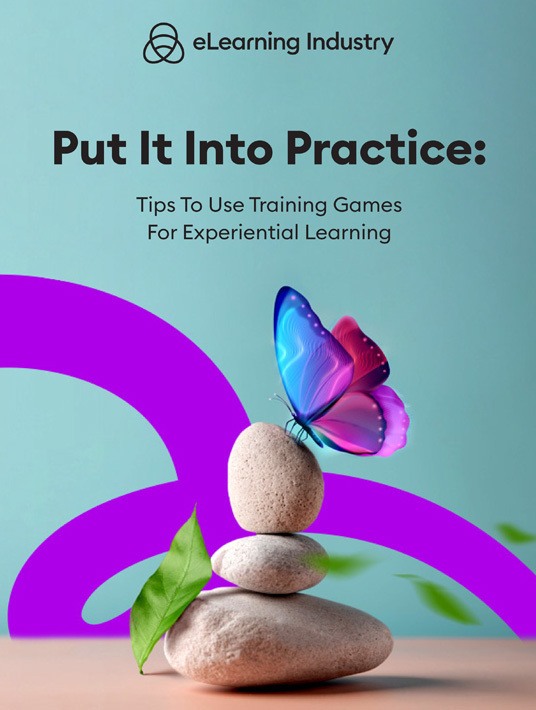Boost Mistake-Driven Learning And Experience Building With Training Games
Most compliance violations, customer complaints, and task slip-ups can be traced back to underprepared employees. They don’t have the necessary know-how or skills to fulfill their job duties. At least, not to the organization’s standards. The catch is that your company may not have the resources or time to bring everyone up to speed. So, how do you lessen the learning curve and ensure that every employee is self-confident and ready for their roles? Implement these 6 tips to facilitate mistake-driven learning and build practical experience with top-notch training games.

6 Ways To Use Training Games For Mistake-Driven Learning And Experience Building
1. Keep Challenges Real And Relatable
Sure, you can incorporate the worst-case scenario to see how employees fare. Do they handle the pressure or crack under the strain? Are they able to keep their wits about them when everything goes horribly wrong? However, the primary goal of mistake-driven learning is to help employees learn from errors that are feasible and believable; how they deal with real-world challenges that they might encounter on the job. So, include relatable problems to see how they cope and which skills they lack. The realism enhances the immersion and allows them to step into the serious game action, as well as spot areas for improvement that require their immediate attention.
2. Add Memorable Characters To Build Interpersonal Skills
Customers and clients are the unknown variable. Thus, your team needs to equip themselves with strong interpersonal skills to navigate the ups and downs of customer service. Incorporate memorable characters to build soft skills and prepare them for challenges in the workplace. For example, what should they do if a customer suddenly becomes irate or starts an argument with another customer? How do they handle the situation tactfully without making anyone feel alienated? Remember, there’s a fine line between memorable and distracting. Opt for realistic over quirky characters who take on a life of their own.
3. Encourage Risks That Lead To Real-World Repercussions
One might think that risks are worrisome in online training scenarios. Do you really want employees testing the boundaries? The answer is yes. Because every risk shows them the potential outcomes so that they learn from mistakes. For example, they try a new approach on the virtual sales floor or test out a task performance trick they learned from a coworker. These calculated risks might lead to unfavorable outcomes but at least they learned a valuable lesson. Game-based learning allowed them to gaze into the future to determine if their current course of action yields the best results. If not, they have time to adjust their strategy before they clock in.
4. Use Rewards To Provide Discreet Feedback
Nobody likes to be criticized; for a team leader to point out their mistakes in front of others and experience that level of embarrassment. That said, employees still need to know about their faults and how to address them—preferably, out of the public spotlight. Training games involve a built-in feedback system. If a trainee doesn’t advance to the next level or earn enough points to move forward, they know there’s work to be done. Even in-game interactions reveal areas for improvement. For instance, they choose a branching path that leads to a customer service catastrophe. The persona grows impatient and asks to see a manager instead of purchasing the product or walking away with a smile on their face.
5. Incorporate Crucial Decision-Making Points
Trainees must be able to see where things went wrong. What was the turning point and how they can remedy the issue? Was there a choice or behavior that led them down the wrong path? Include decision-making points that align with specific outcomes or objectives. You can even use them to test for gaps and identify strengths. As an example, the trainee is faced with a compliance conundrum. Do they accept the gift of the client or politely decline? What happens if they take the item and don’t disclose it to their manager? Explore all possible repercussions so they know what to expect and how to avoid these challenges in the real world. Staffers are less likely to break the rules if they unblur the lines and reveal all the negative consequences that are involved.
6. Let Learners Experiment And Retrace Their Steps
People rarely get the opportunity to see how things pan out beforehand. As they say, hindsight is 20/20. Instead, they have to live through the experience and hope for the best. Hope that their actions don’t get them in hot water or have a ripple effect. Game-based learning gives them the gift of experimentation and self-reflection. Encourage them to try different tactics and techniques in various replays of the game to evaluate the different results. How did one approach change the final outcome? What would they do differently next time? Is there a certain skill or topic they need to concentrate on? Retracing their steps allows employees to look back on their training performance to view the cause and effect. If they changed one aspect of the scenario it might trigger an entirely new series of events, just like in the real world.
Conclusion
Mistake-driven learning is a challenge for many organizations because they forget about follow-up. Pointing out errors is one thing. But then you need to take it a step further by providing targeted feedback and the necessary support. Likewise, it’s not enough to simply give employees the experience and hope they apply it on the job. Performance management is key. Fortunately, you can develop tie-in games that reinforce favorable behaviors and fill gaps on the spot.
There’s no room for mistakes when it comes to finding the right eLearning content provider for your gamification training strategy. So, use our online directory to choose an outsourcing partner who understands your needs and works within your budget.
Badges, points, levels, and serious games don’t have to be a distraction. Nor do they require an expert game designer. You just need to know the basic rules of GBL to implement a successful strategy. Download our eBook Put It Into Practice: Tips To Use Training Games For Experiential Learning for insider secrets.








